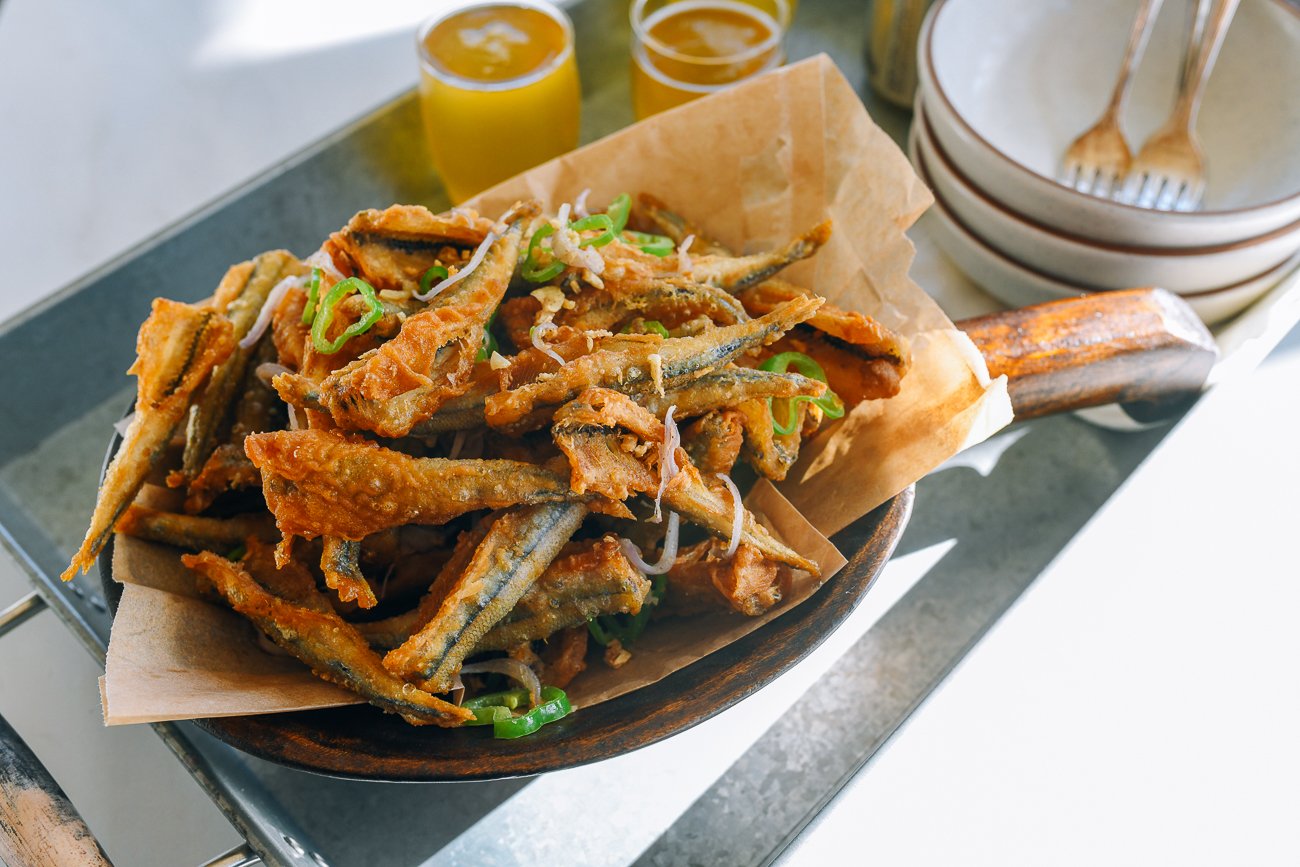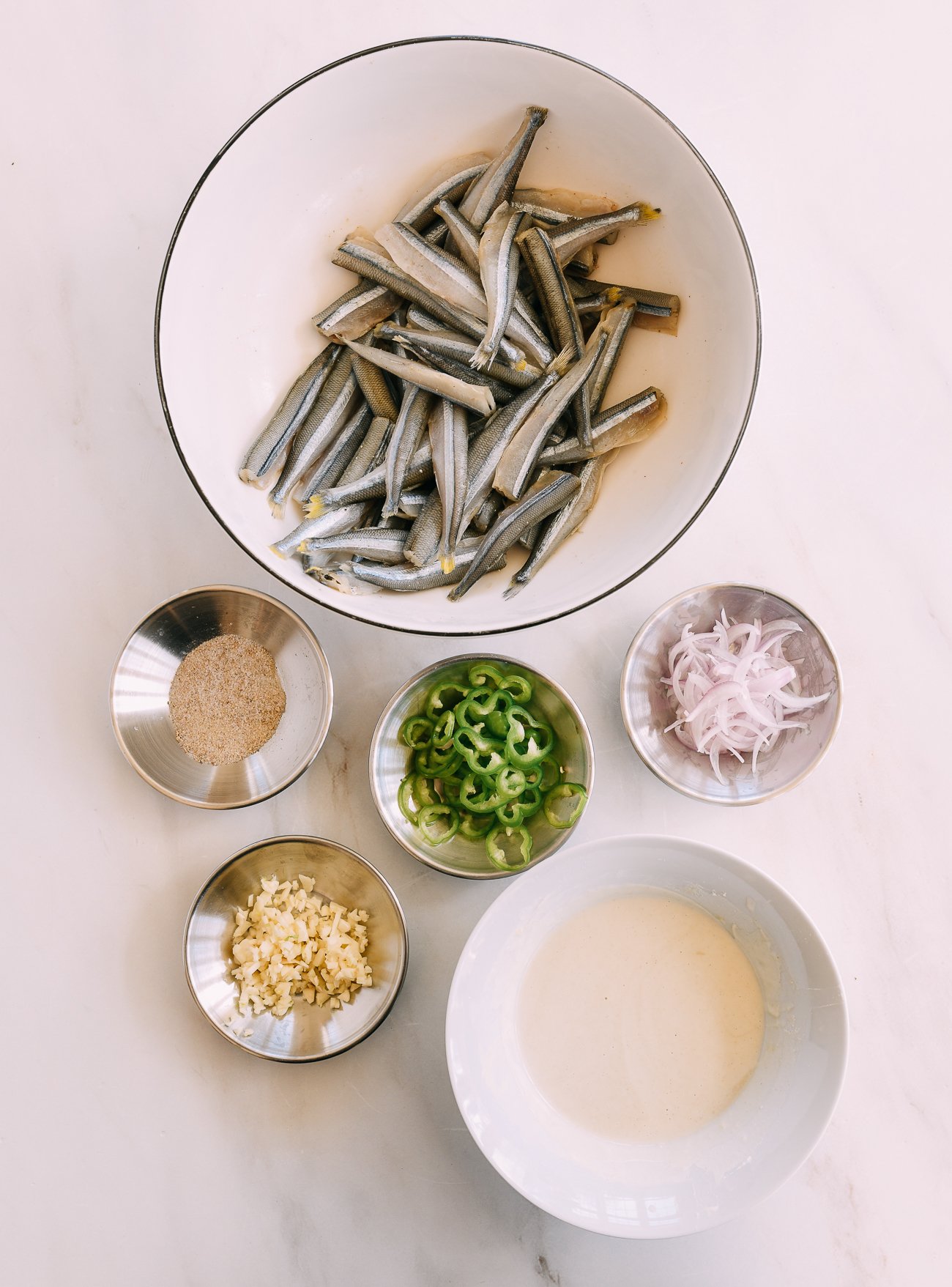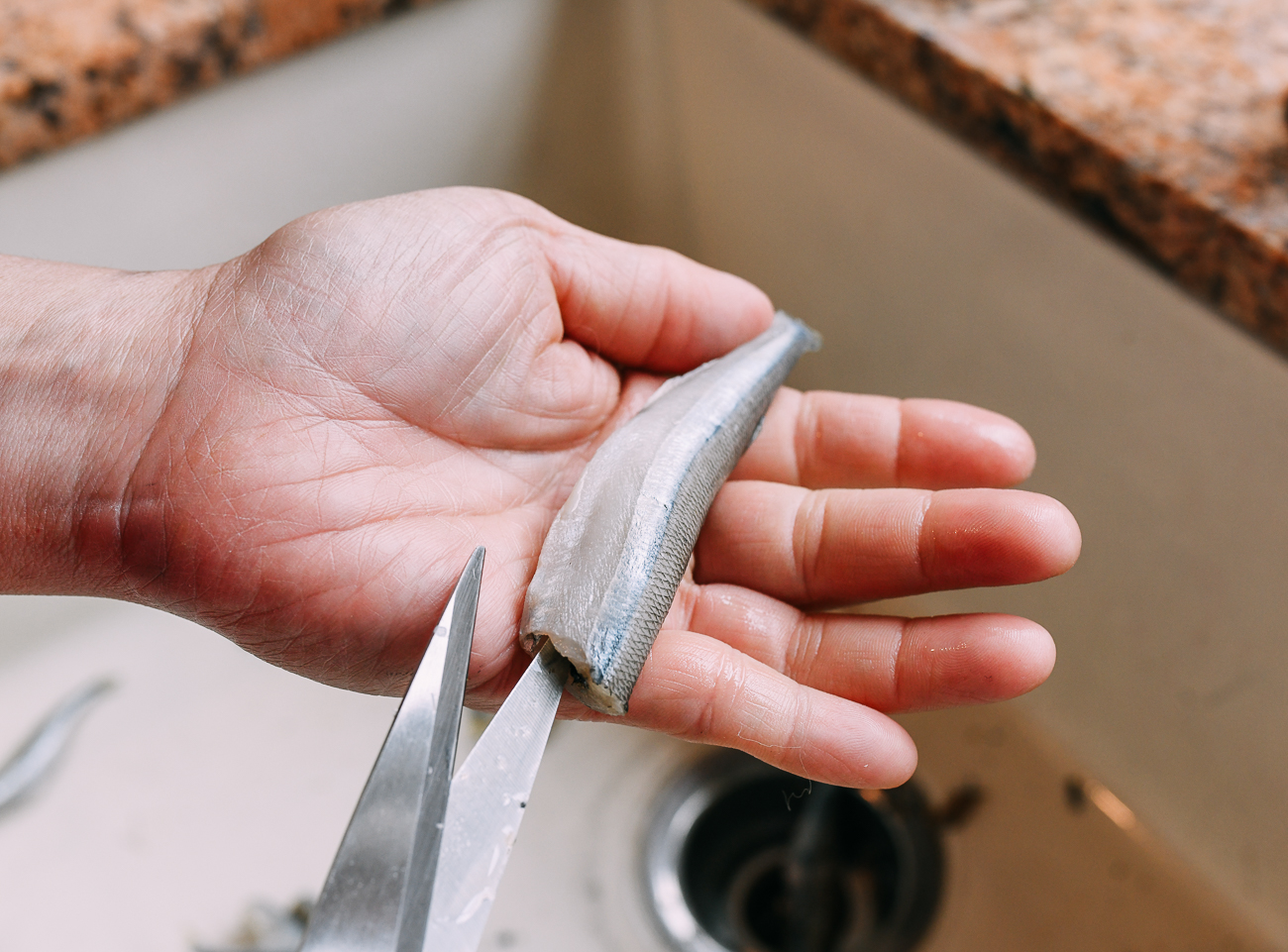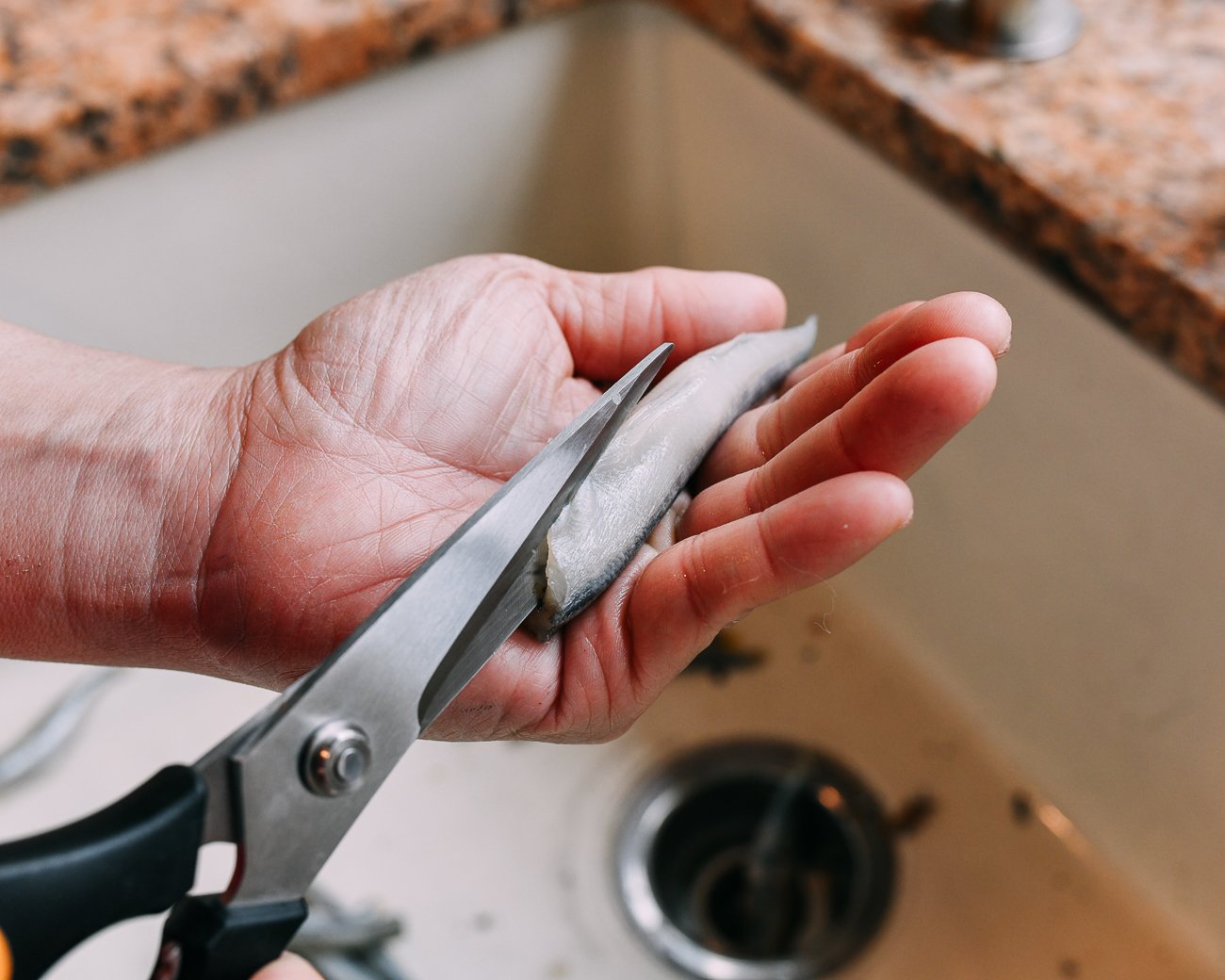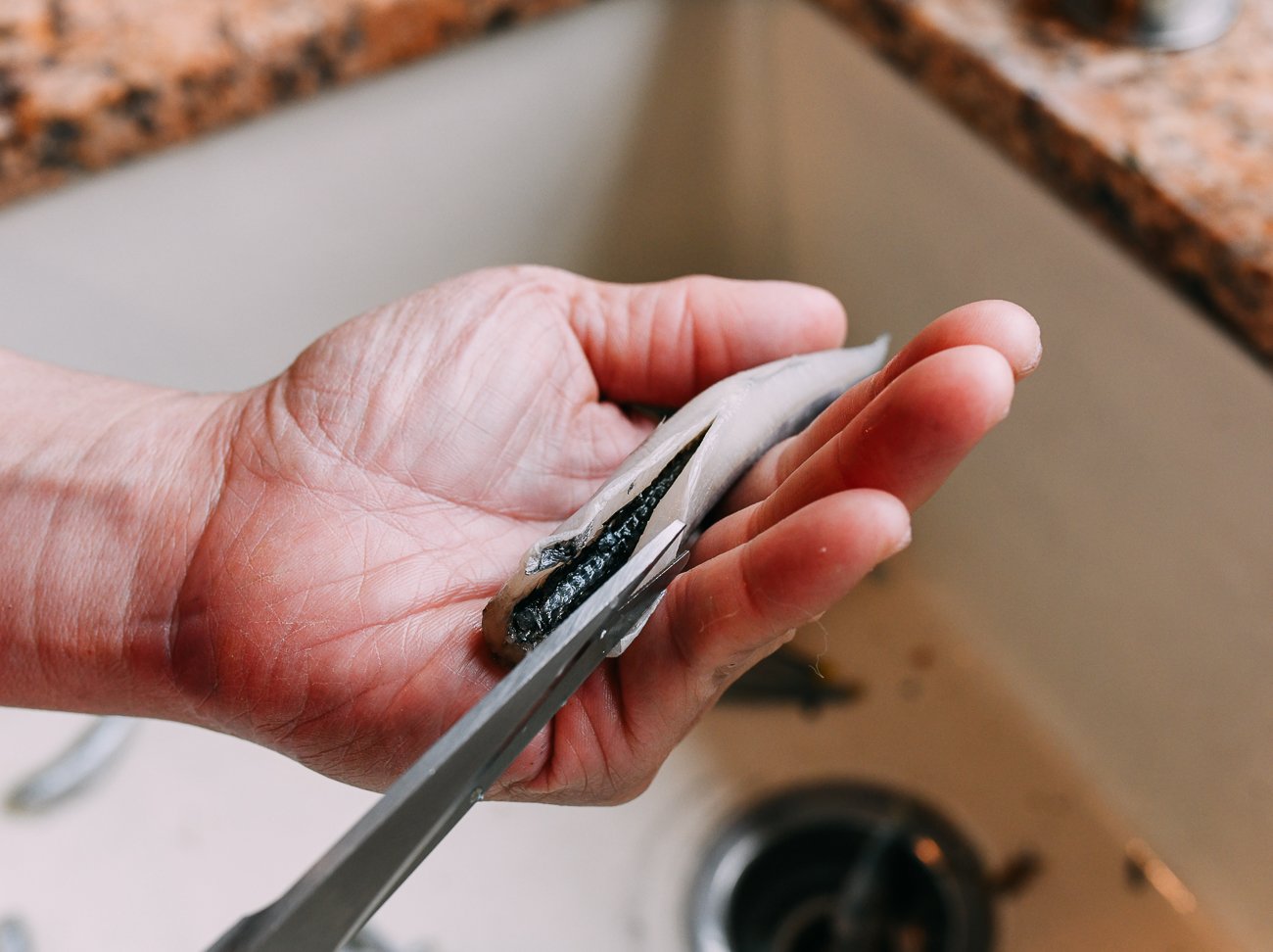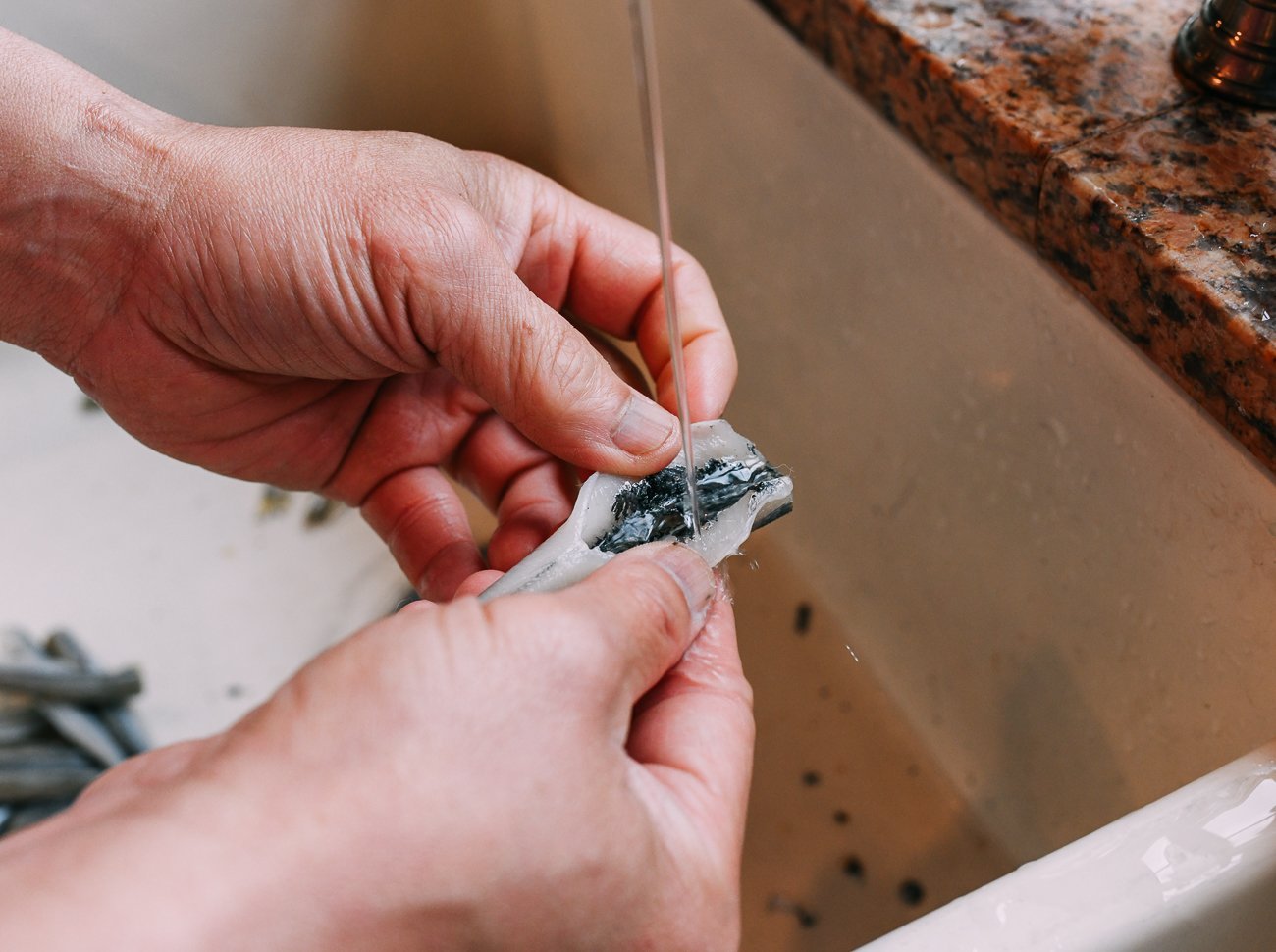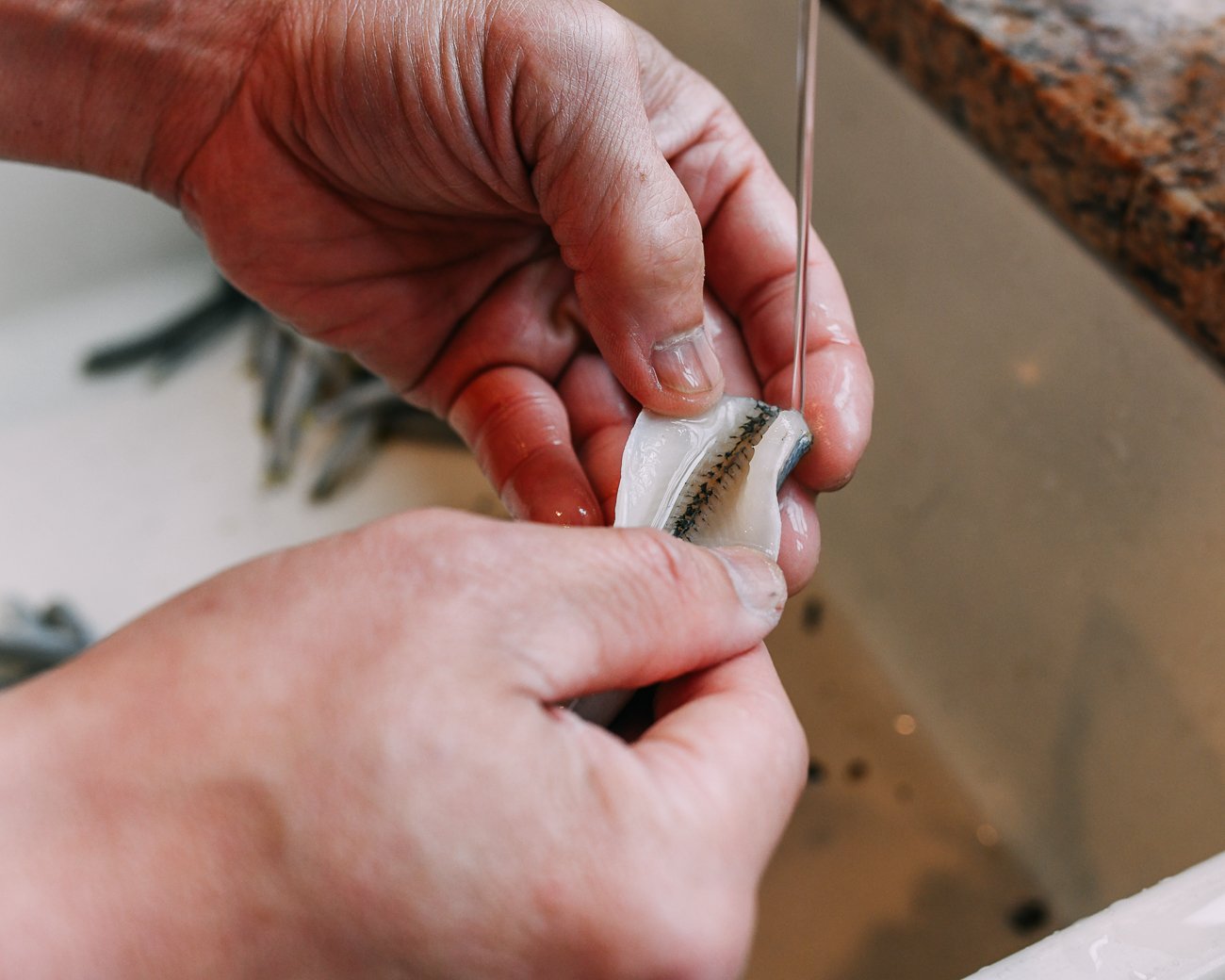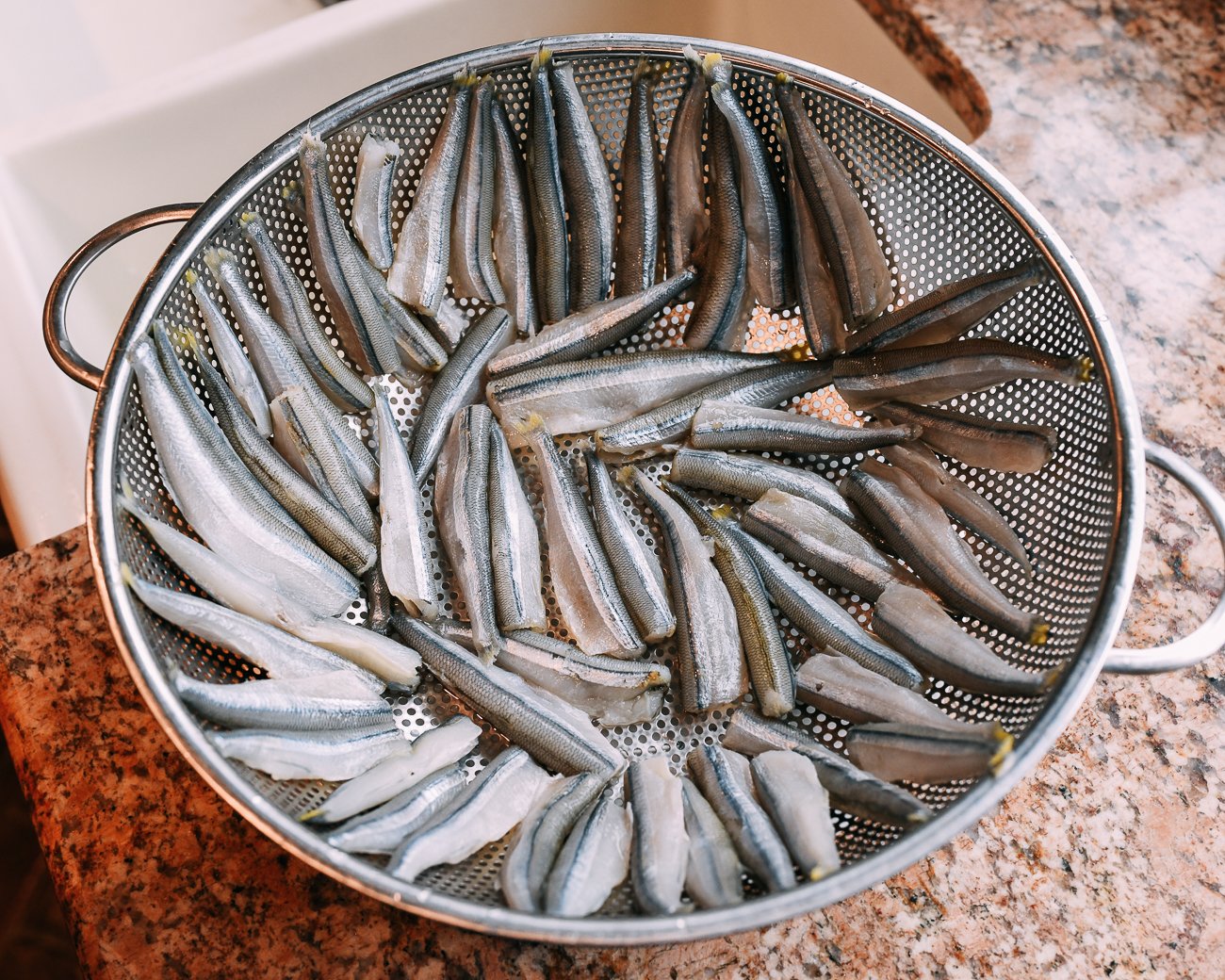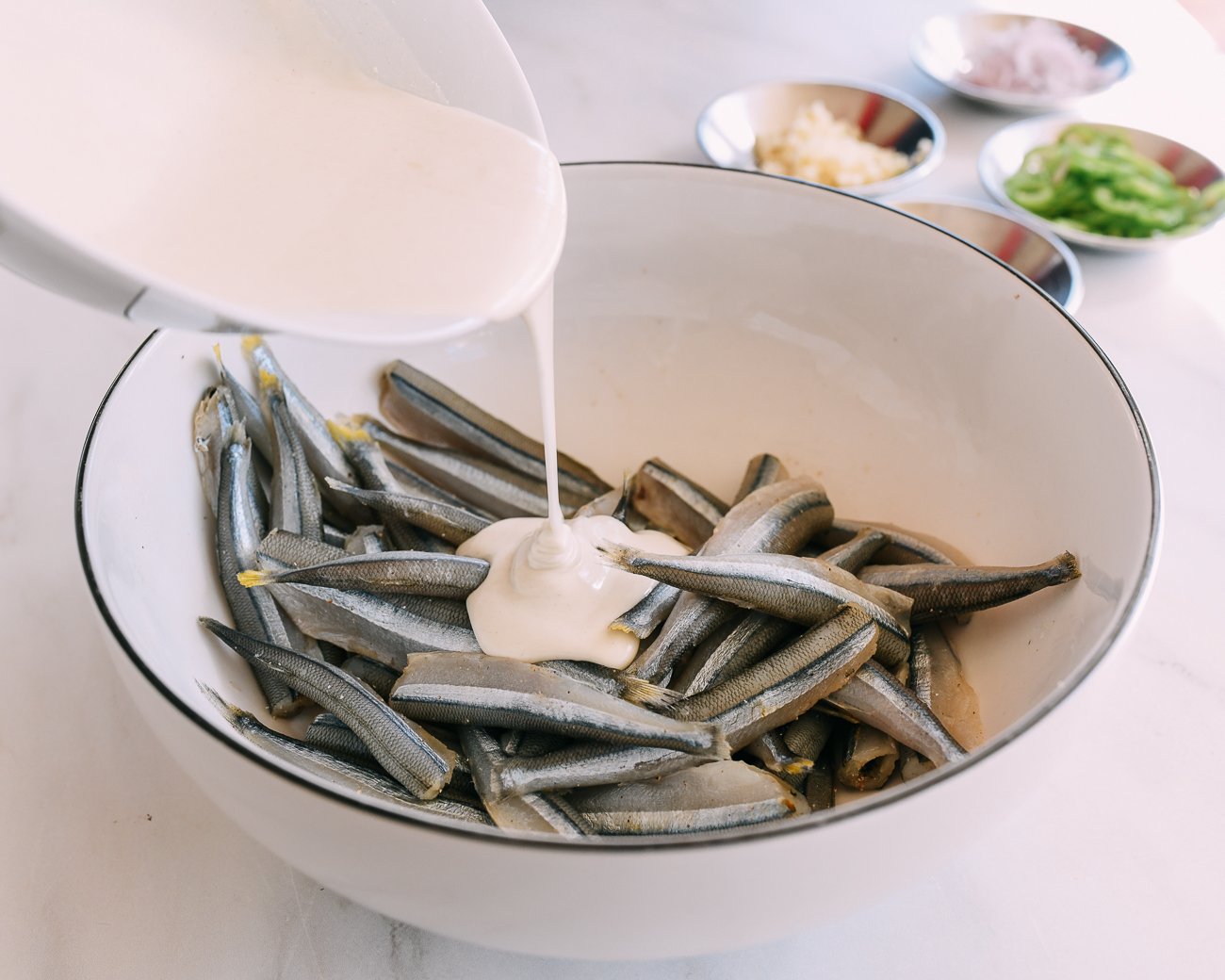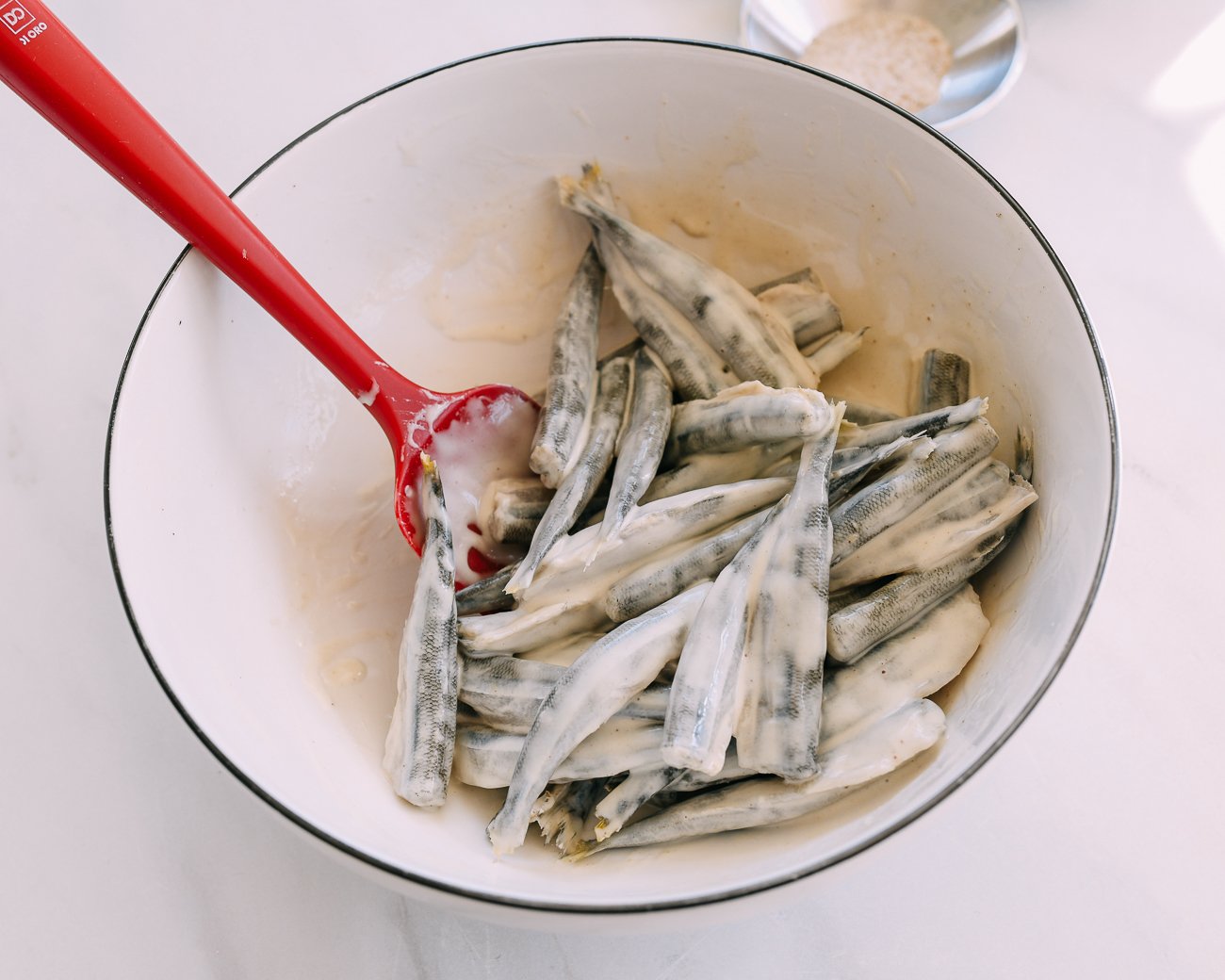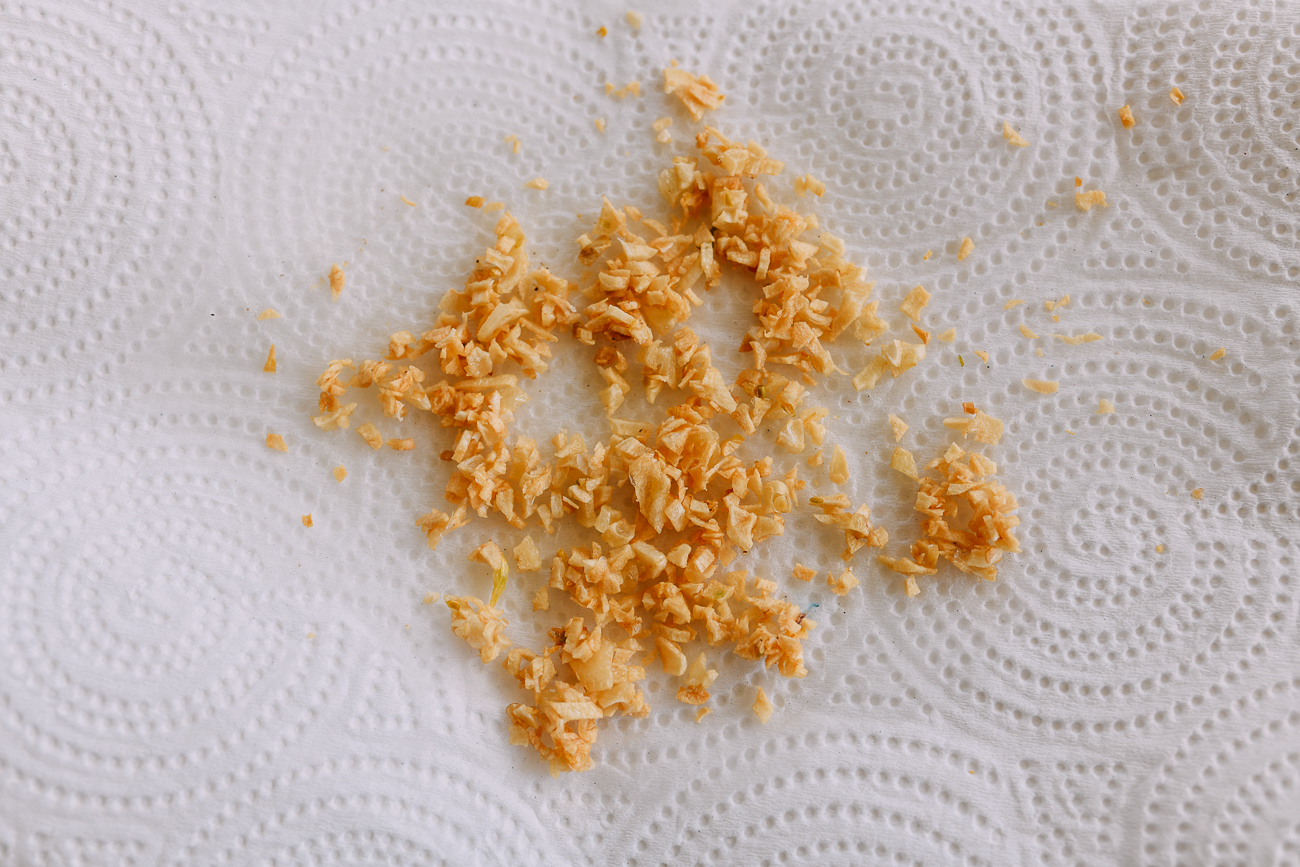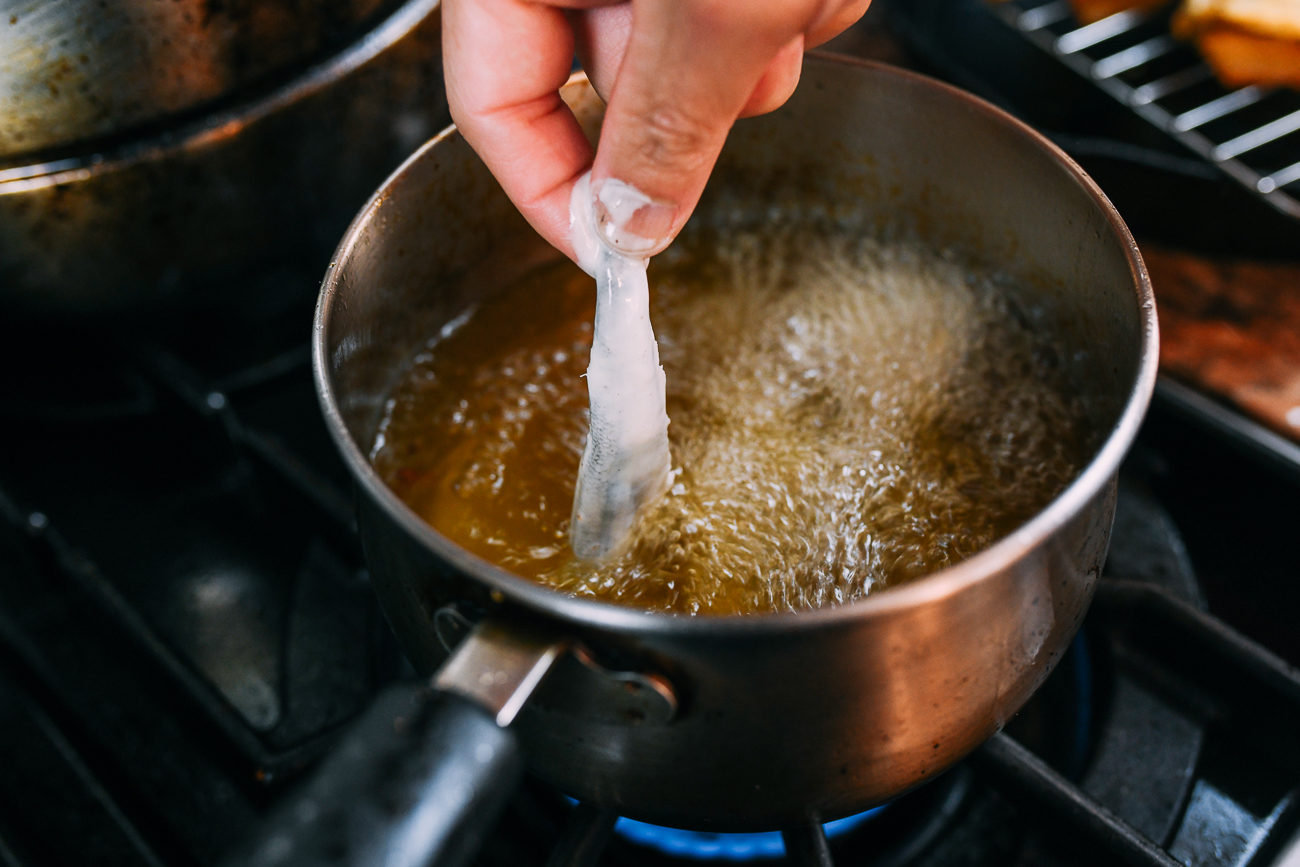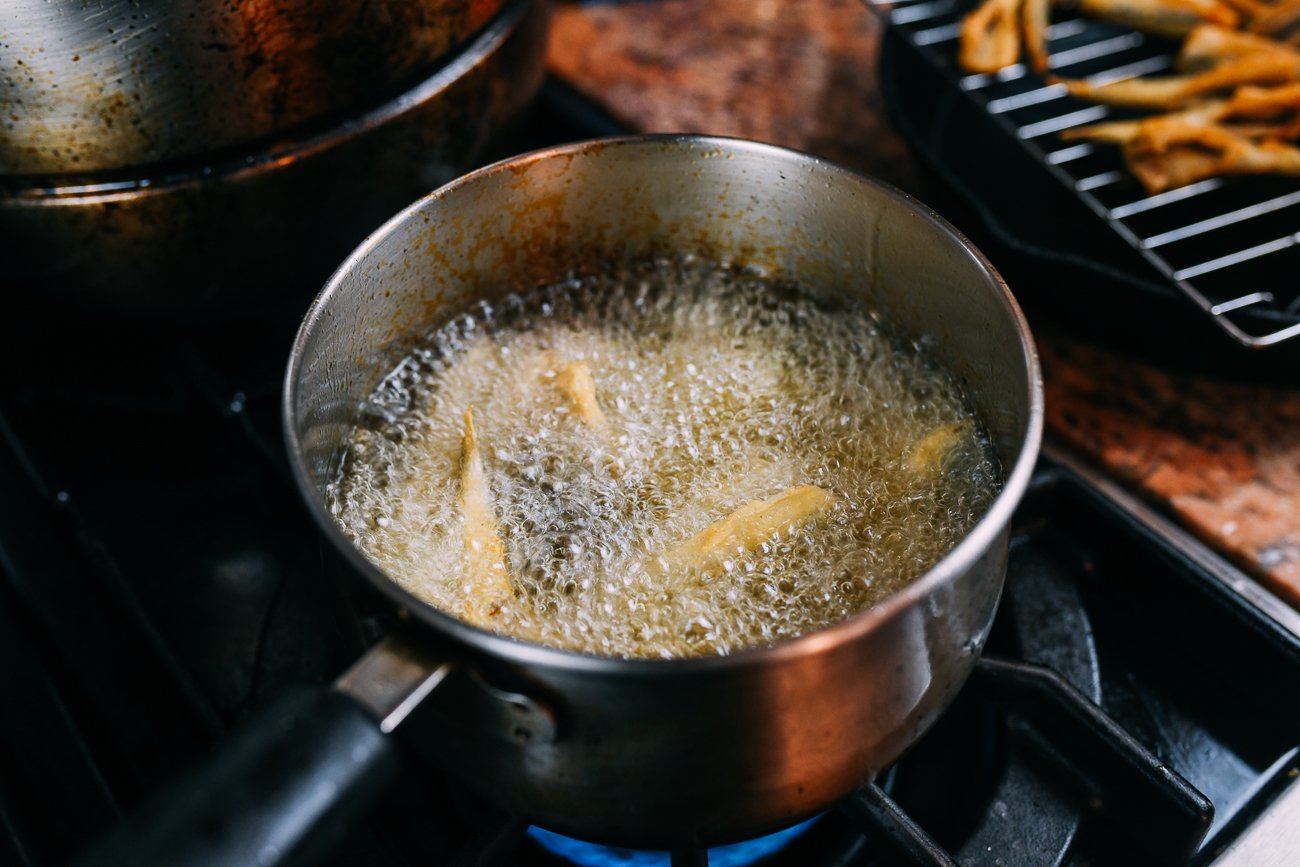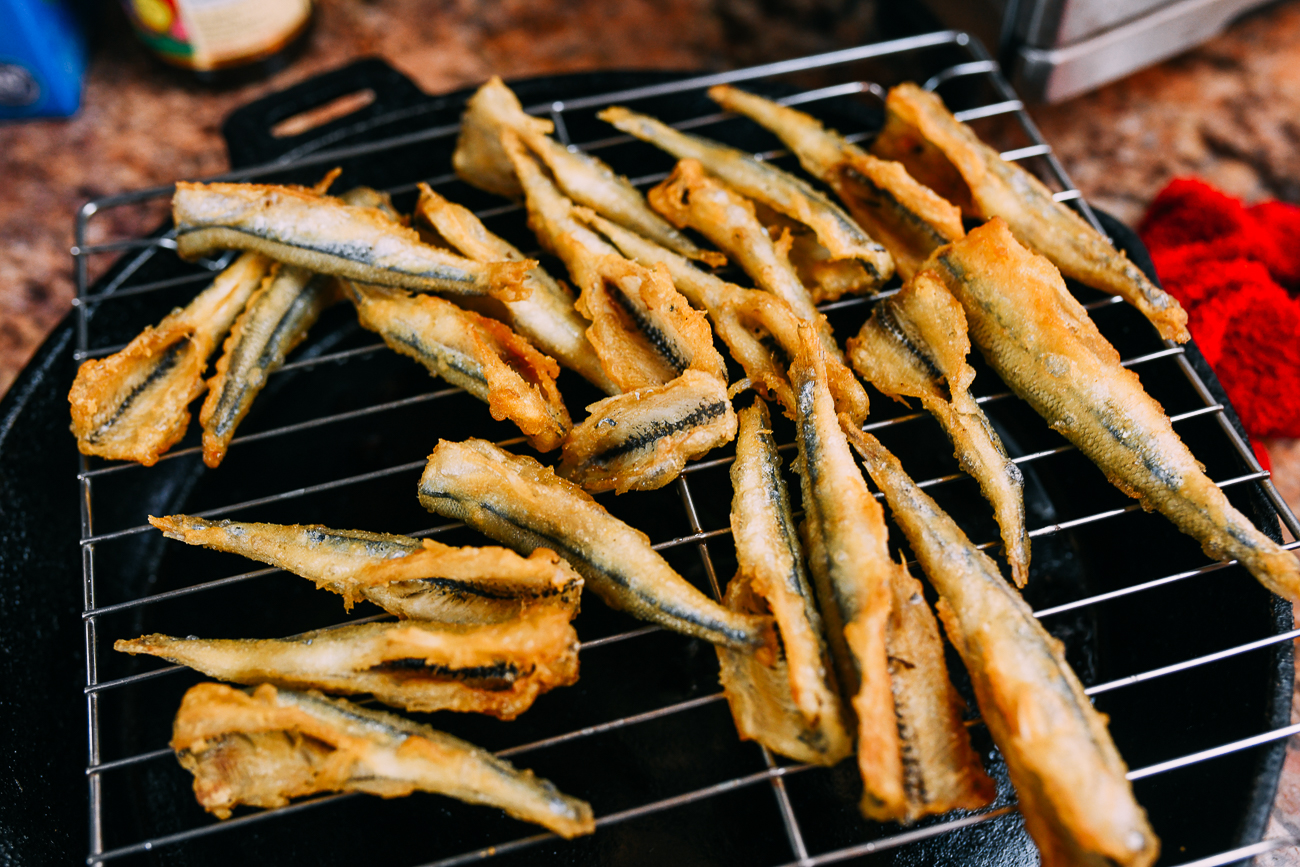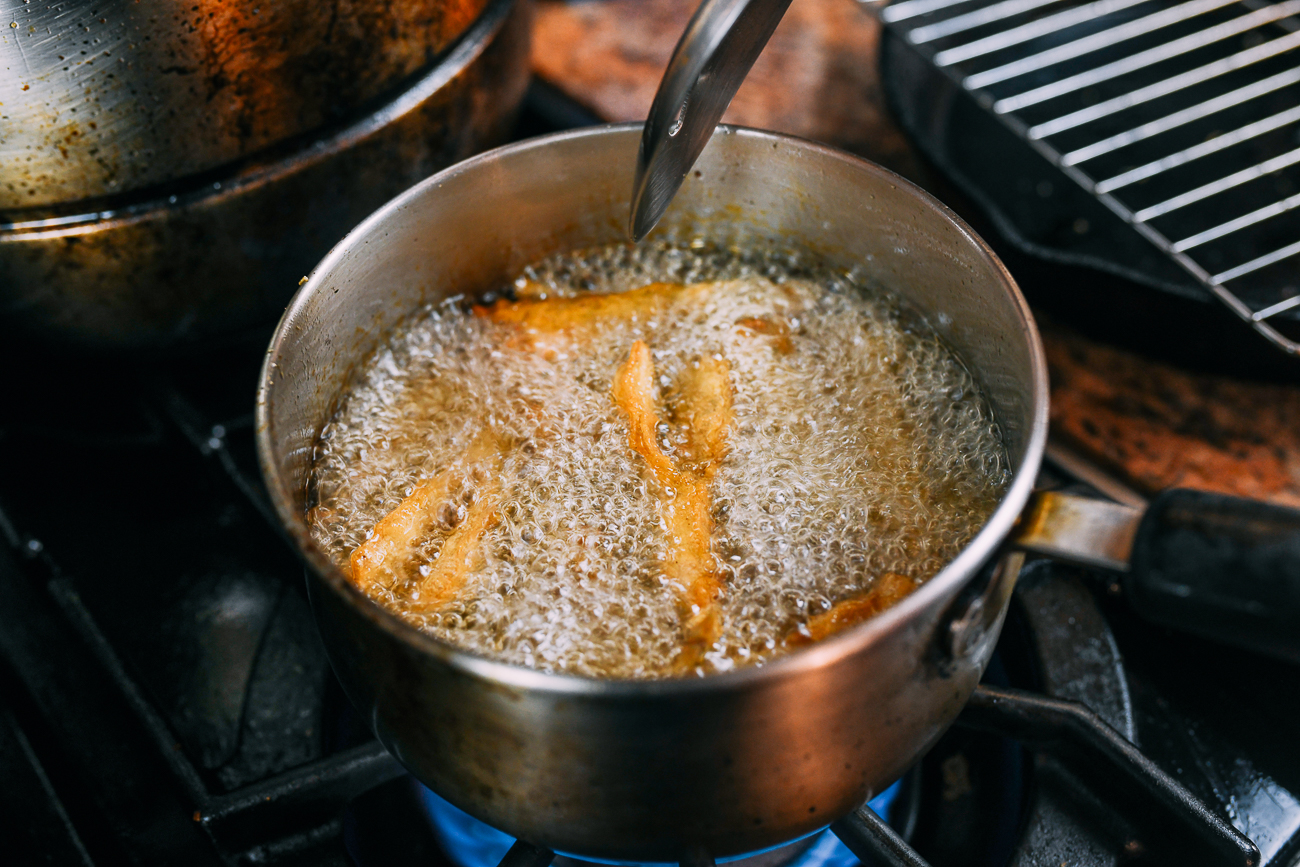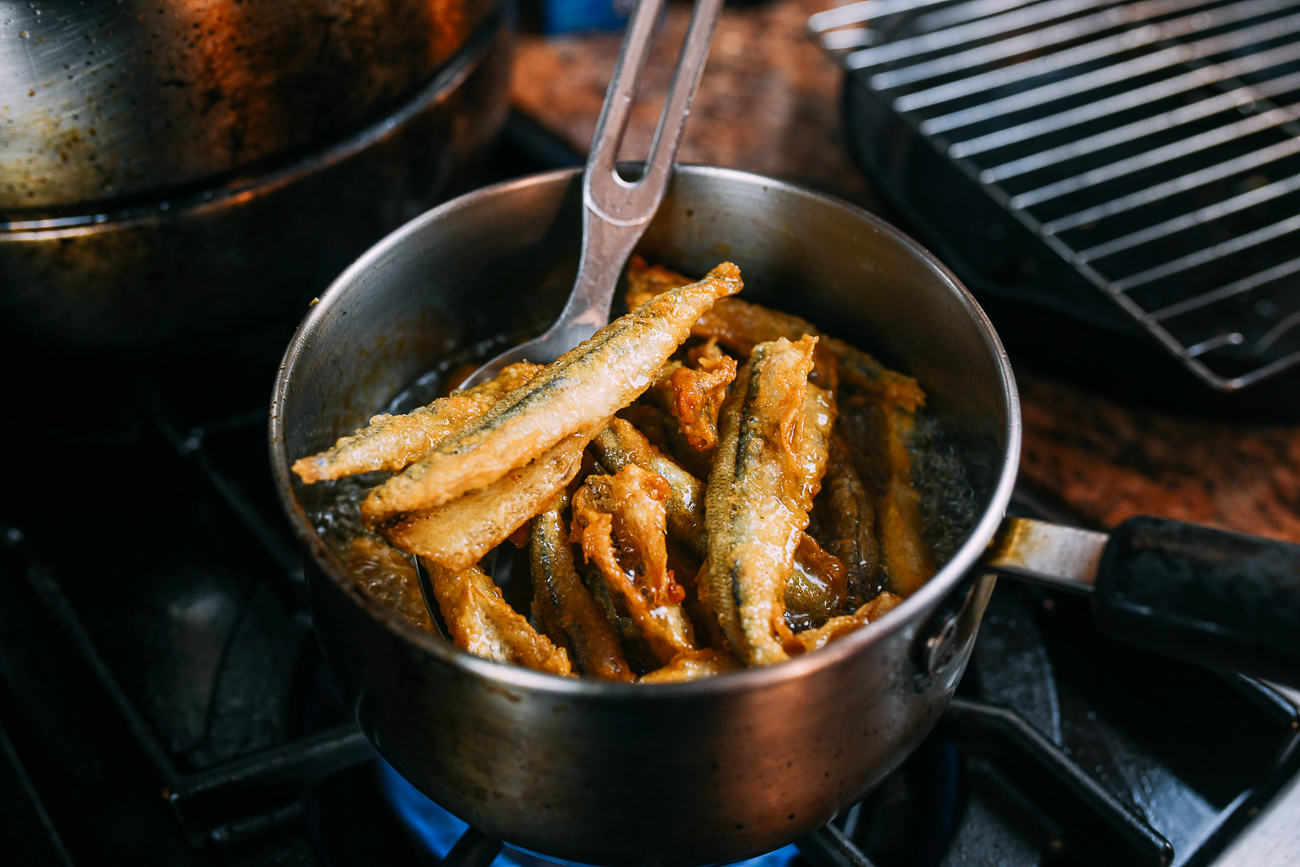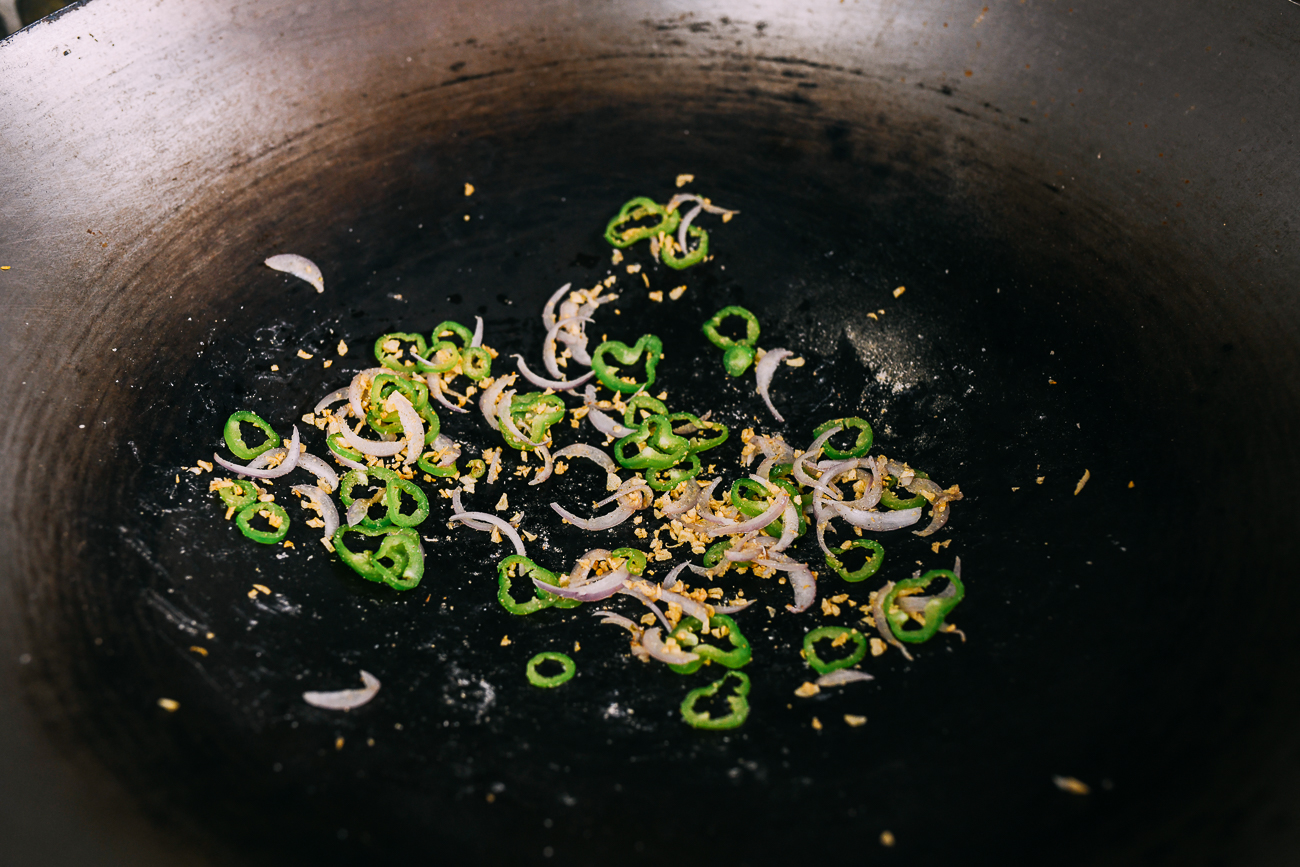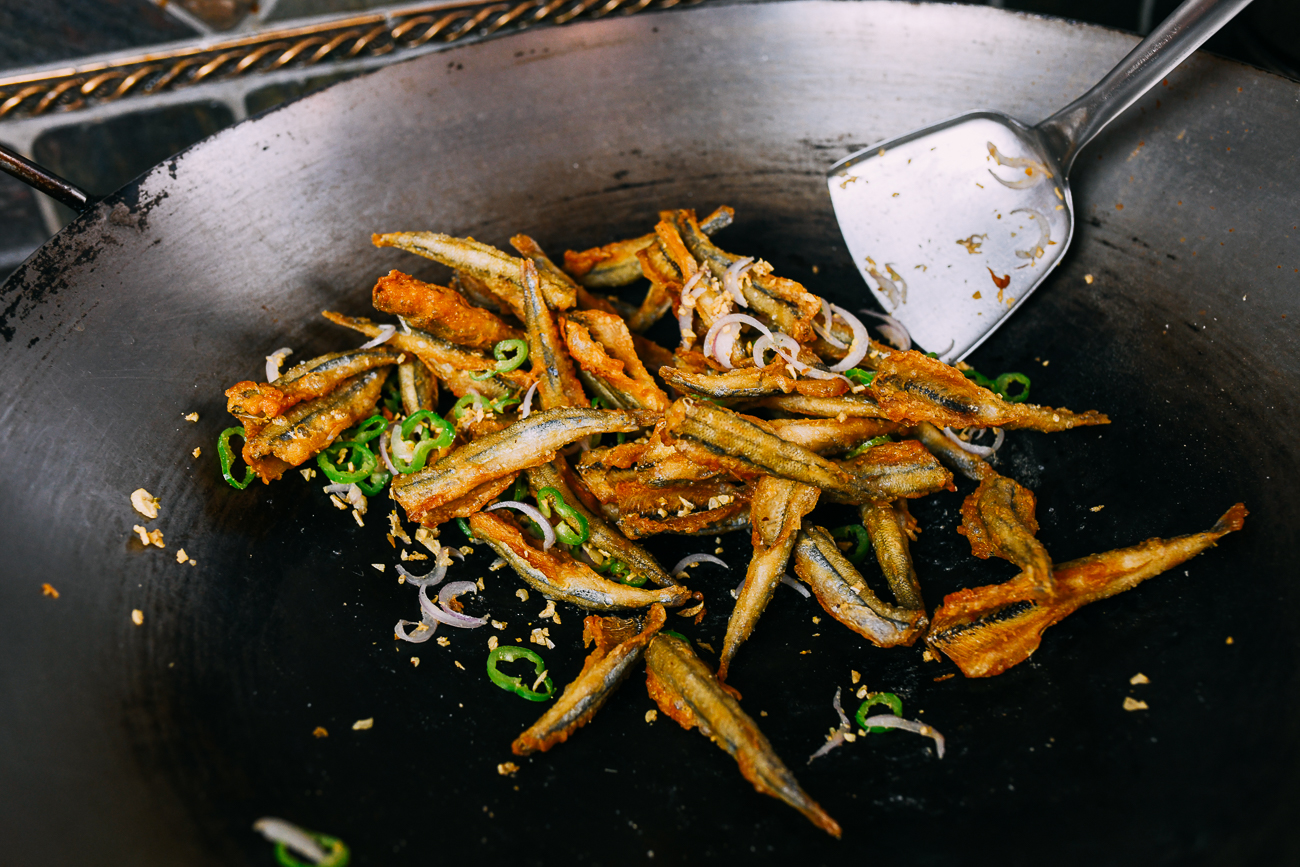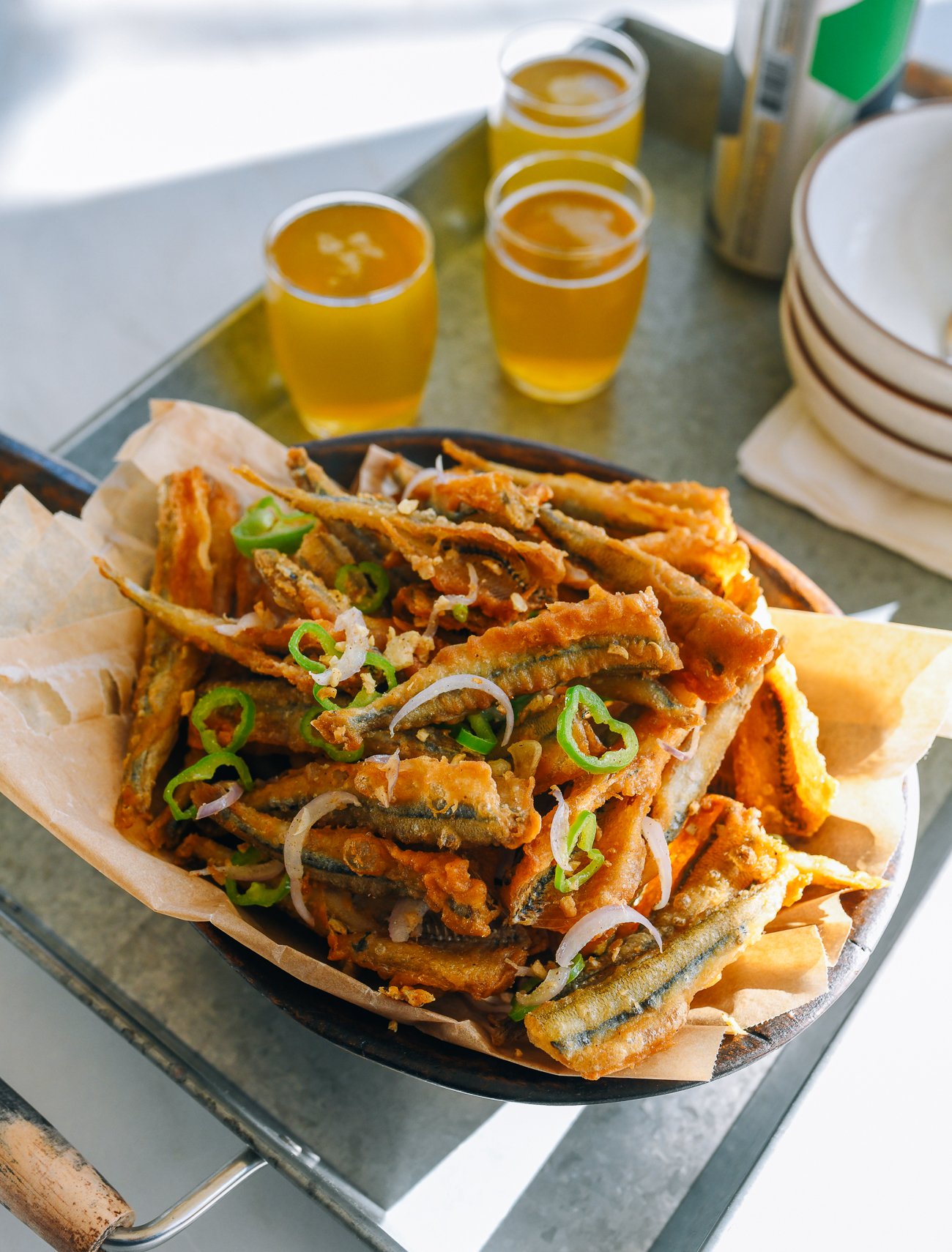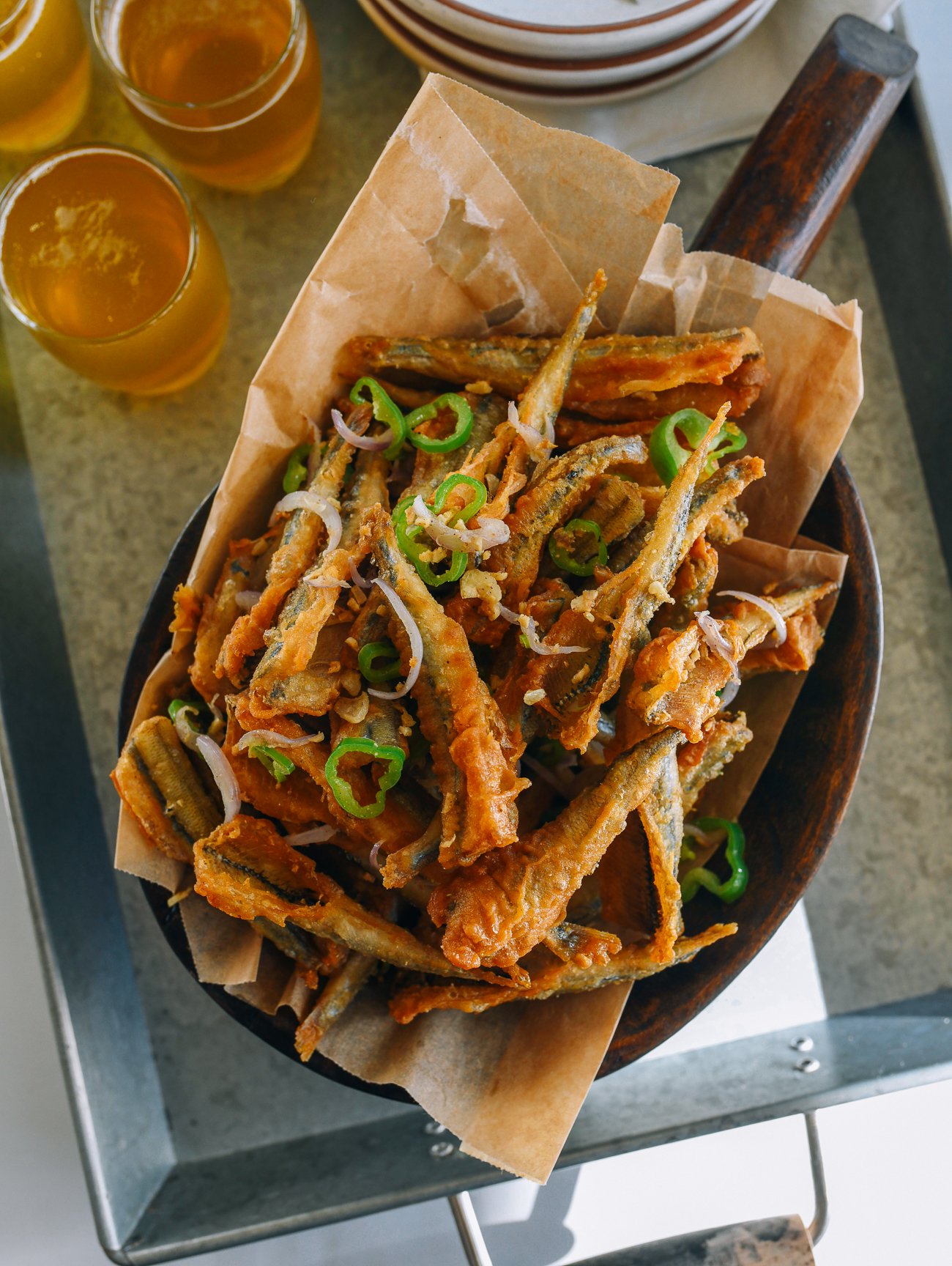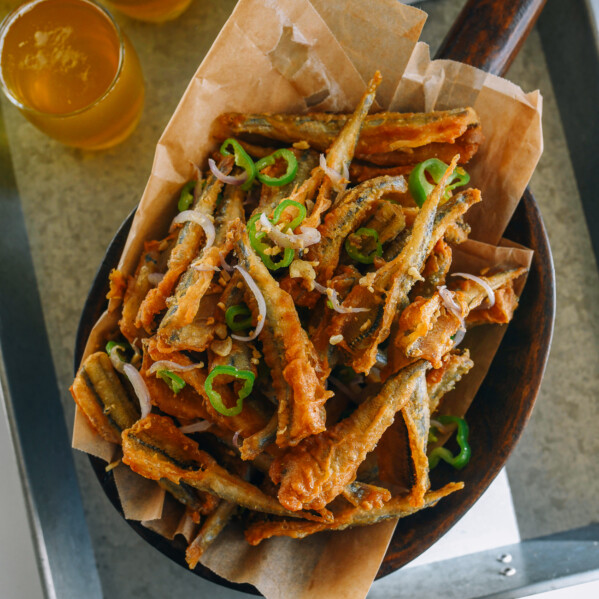We can’t resist the masterful light and crispy batter here, and the aromatic yet simple spices that are delicious with just about anything: shrimp, squid, and tofu. We’ve even had it with king crab legs at Cantonese restaurants. It’s satisfying and delicious, letting the seafood shine and eliminating any fishiness! If you love smelt, this recipe will give you that familiar crispy, clean taste, but with an extra punch of flavor from the Cantonese salt & pepper technique.
Fried Smelt Memories
I have fond memories of fried smelts. After graduating with my electrical engineering degree, I landed my first job in Binghamton, NY, and lived there for almost two years. One of my software engineering coworkers introduced me to smelt netting in late spring/early summer, when smelt would run during their annual spawn. The next day, we would get together and have a beer batter smelt fry with tartar sauce and fried potato wedges on the side. (It was a lot like the beer battered fish fry we did at Raquette lake in the Adirondacks!) When we had surplus catches, we would freeze them in portions, breaking them out to pan fry them simply with salt and oil, or to make this tasty recipe for Cantonese Salt and Pepper Fried Smelt.
What is Smelt and Where Can I Find Them?
Smelts are a family of small freshwater fish, the Osmeridae, typically found in rivers, streams and lakes in North America, as well as in Europe and Northeast Asia. These are the species we netted in upstate New York, back in the eighties when they would run into the rivers and tributaries of deep-water lakes. They were often used as bait while trolling for lake trout. Sadly, the smelt population has waned over the years. Nowadays, smelt netting is a rarity (and more restricted per New York State fishing regulations). I have read/heard that it is still common in Michigan, but even there, local native fish populations have changed significantly over the decades. Today, you can purchase frozen wild caught smelts, the majority of which originate from Canada. In spite of these local overfishing concerns, we see them often in fish markets of NYC Chinatown, which is where we purchased the smelts for this recipe.
Old School Smelt Netting
Back in the day, netting smelts involved going out after dark, clad in waders, a small bucket around our necks so our hands were free to hold a double mantle Coleman Kerosene lantern in one hand and a metal smelt net with a long handle in the other hand. While I forget the specific locations we went to, we would pull up to a small tributary that was connected to one of the larger lakes in the Binghamton area, park in the access lot, and wade along the stream looking for smelts. It was a sport—or even an art—to net the wily silver fish. When smelts were scarce, you really had to have a good eye, some technique, and quick reflexes to get a good catch. But when the smelts were spawning and running, the stream was so full of them that you could practically net them with your eyes closed! Naturally, in season, you’d be surrounded by fellow fishermen, all armed with their own lanterns glowing in the dark. It was quite a sight to see!
To Double-fry or Not to Double-fry?
The question some of you seasoned seafood cooks may be asking: Do I need to fry smelt twice? Double frying smelt is a question of preference. We have lots of recipes where we recommend a second fry, like our Chinese takeout fried Chicken wings, Salt and pepper pork chops or General Tso’s Chicken, just to name a few. My general rule is that if you can fry them quickly and eat them right after you finish frying, and if they are especially fresh (like you just netted your limit), then a single fry should be good enough. Here’s a summary of things to consider: Reasons NOT to double fry:
Smelts are small and delicate. They cook up fast and will hold their crunch reasonably well. You’re going to eat the smelts right away after frying.
Reasons TO double fry:
You want to fry the smelts in advance, but they’ll be sitting around for a while and need a second fry to reheat and reinvigorate them. You like your smelts EXTRA crispy—like little french fries
Now let’s get down to our salt and pepper fried smelt recipe!
Recipe Instructions
Using a large colander, wash and drain the smelts. You smelts will likely have already been cleaned, but you can make them extra clean! Start by using a pair of kitchen shears to cut open the belly of each smelt. You’ll see some black stuff inside the smelt. Use a thin stream of cold running water to rinse it out. Pat the smelts dry with a paper towel or let them air dry in a colander. Toss the smelts with the clear rice wine and salt, and set aside. In a large bowl, make the batter coating. Add the cornstarch, flour, water, vegetable oil, baking soda, and sesame oil. Whisk thoroughly. Toss the smelts in the coating. In a small bowl, make the seasoned salt mixture. Combine the salt, sugar, white pepper, and five spice powder (if using). Set aside. Heat the peanut or canola oil in a small pot to between 250-275°F (120-135°C). (If you like, you can use a larger pot to fry larger batches, but you’ll use up more oil that will end up tasting vaguely fishy even if you do decide to use it in other dishes.) Add the garlic to the oil, and cook until it just starts to turn color (30 seconds). Be careful not to brown the garlic, or it will be bitter. With a fine-meshed strainer or large spoon, scoop it out onto a plate lined with paper towels to drain (it should be slightly crispy). Turn up the heat, bringing the oil up to 350°F/175°C. Quickly but carefully lower the smelts into the hot oil one at a time. Be sure to place the fish away from the others as you fry so they don’t stick together. The oil temperature will come down each time you add new pieces, so adjust the heat to maintain the temperature. Fry until light golden—about 1½ to 2 minutes is enough to cook the fish, depending on the size. Place on a rack to drain and continue frying in about 5 total batches. As the smelts come out of the oil, sprinkle a pinch of the seasoning salt over each batch. Be sure to reserve some of your seasoning salt to finish the dish later. This next step is optional. If the smelts are particularly fresh, or you don’t mind them slightly crispy, you don’t need a second fry. The fish will be more tender with a single fry. That said, if you like them crispier or fried them in advance, you can go for a short second fry. To do that, let the oil temperature come back up to 350°F/175°C. Add the smelts back to the oil in batches for 15-30 seconds, or until crispy. You can likely do this in just 3 batches, as there’s no longer a risk of the smelts sticking together. Transfer the crispy fried smelts to a serving platter. Heat a dry wok over high heat until just smoking. Reduce the wok to medium-low. Add the green peppers and toss for about 20 seconds—just until they turn fragrant. Turn off the heat and add the fried garlic, sliced shallots, and the remaining seasoning salt. Mix. Add the smelts, and gently toss everything together. Serve immediately as an appetizer or as part of a main meal.
